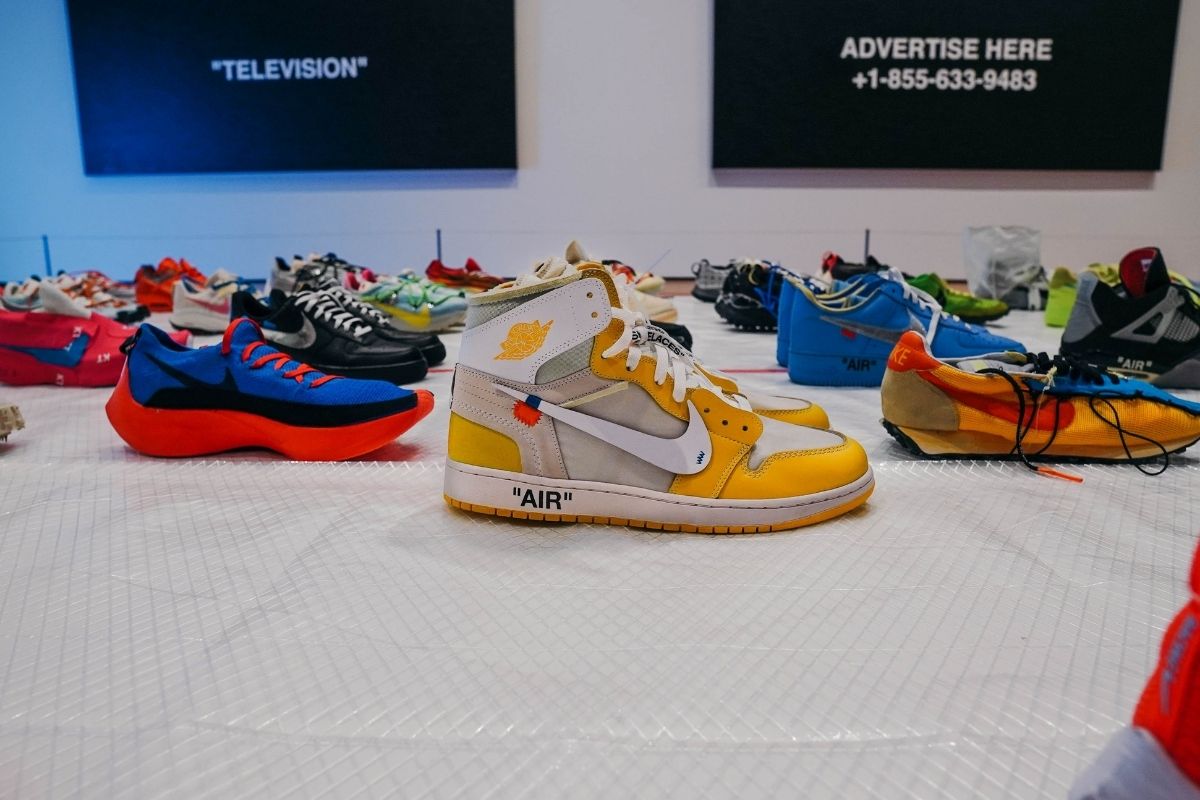Sneaker Industry Price Increase

Like everything else in the world, the price of sneakers has consistently gone up over the years. This is due to inflation, but even more so, due to market demands. For example, when the original Air Jordan 1 came out, it cost $65. Nowadays, you are paying around $160 for the same sneaker. That’s almost a $100 price increase that happened over the past 30-plus years for that one shoe.
Sneakers Are Used as a Status Symbol
The price of sneakers used to be viewed as more of a status symbol. The New Balance 990 was the first sneaker on the market to cost over $100, so if you saw people wearing them, you knew they had money. Many drug dealers, specifically in the Philadelphia and Washington DC areas, wanted those sneakers to display their status.
The same thing happened with the Nike Air Foamposite One. They became a status symbol because of their price. They were about $180 when they first came out in the 90s, and they quickly became the known shoe of hustlers. Status is how sneakers and the sneaker culture were given life and why sneakers are more expensive now than ever. Today, there are New Balance sneakers that cost close to $400 and certain Air Jordans that are over $300 a pair.
The price increase of sneakers is also causing the resale market on shoes to go up. It’s not just about the initial price of the sneakers, it’s also about the demand. A pair of Yeezys that retail for $220 can resell for over $1,000. Most people that I know aren’t going to go out and buy a pair of $1,000 shoes, so the cost is almost fictional at this point.
Most ordinary people aren’t paying the $1,000 price tag on resale shoes, but celebrities and rappers are. They buy them outright with cash, or they make trades. They are taking four or five pairs of shoes that they own and trading them all in for one new pair. This is what’s driving the economy on sneakers up. Of course, people are looking to cash in and make as much money as possible on the secondary market, so I don’t see this ending any time soon.
Sneaker Education on the Stages of the Sneaker Economy
There are different stages of the sneaker economy. First, there is wholesale, which is the sneakers’ manufactured price and the cost retail establishments pay to procure the sneakers. Next, there is retail. Retailers are where consumers would buy the sneakers. The retailers can charge whatever cost they want; however, there is a suggested price created by the manufacturer called the MSRP (manufacturer’s suggested retail price.) This price is just a suggestion and does not have to be used by the retailer. Finally, you have the resale economy. In this day and age, sneakers are the most popular on the resale market. This is where a new kind of retailer comes into play, called consignment shops. Consignment shops can include physical stores and also sites like eBay and Amazon.
Resale Market of Sneakers
Consignment shops thrive purely on the resale market because the value is based on popularity and demand versus supply. For example, let’s say a popular sneaker hits retail stores, and only 2,000 were made, but more than 2,000 consumers want them. When these sneakers enter the resale market, they become more valuable due to their rarity and exclusivity. As a result, the value from their box price is going to skyrocket.
If you are going to resell your sneakers, then be prepared to pay out some of the profit because everyone wants a cut. If you are reselling shoes with a consignment shop, they will take 20% of what you make on them. If you are reselling them online using an e-commerce site, which allows you to sell anything, then be prepared to pay sellers fees and such.
Now you have companies that are starting to index the resale value of sneakers that are historically released over time. It’s almost as if we are treating future models of sneakers like current commodities. When you have companies tracking the resale value of sneakers in real-time, it speaks to how the resale sneaker market has come to be worth over one billion dollars.
This sneaker resale market is crazy because, to be quite honest, many of these sneakers are widely available. Some consumers just assume that specific sneakers are going to be hard to get, and it’s this way of thinking that drives the value of the sneakers up. It’s similar to the speculation that goes along with the stock market.